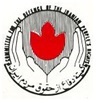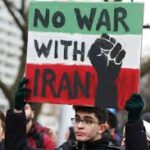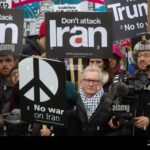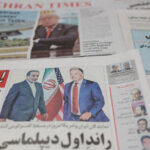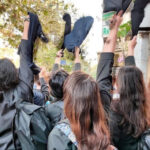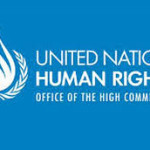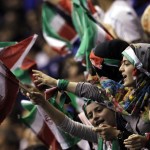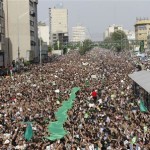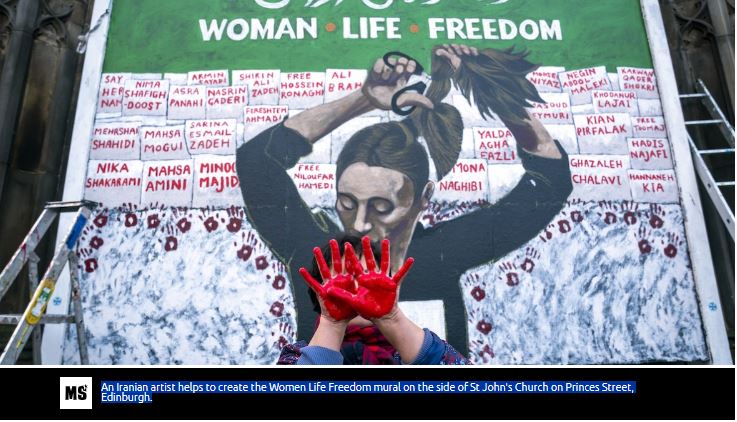
GITA AZADI of the Democratic Organisation of Iranian Women talks to the Star about Iran’s famous Woman, Life, Freedom movement, the misogyny of Islamist rule, and what women worldwide can do to show solidarity
THE Democratic Organisation of Iranian Women has been fighting against systemic violence to women in Iran for many decades. Can you say something about the history of this fight? What is the main thrust of the campaign at present?
Thank you for inviting us for this interview on the anniversary of the international day for the elimination of violence against women.
The Democratic Organisation of Iranian Women (DOIW) was founded in 1943 to carry out work raising awareness of the rights of women in the emerging dependent capitalism in Iran.

While women’s labour force was concentrated in traditional agriculture, carpet-weaving and handicraft, nursing and working in factories and workshops, among the key objectives of the organisation was organising women around demands for equal rights, the right to vote, abolishing reactionary laws, for peace, equal pay.
Promoting literacy for girls and women, and gender awareness in society were among the tasks that the organisation took on from its early days. The struggle for peace and against fascism was one of the organisation’s immediate objectives.
Can you explain something about the way in which the theocratic dictatorship, and the Islamic imposition of Islamic law/rule, has a particularly devastating impact on women in Iran?
While Iran is a so-called Muslim-majority country with over 98 per cent reportedly identifying as Muslim, it was with the adoption of political Islam after the 1979 revolution that the observance and practice of Islam became a matter for the state.
The adoption of Sharia law brought with it the imposition of a medievalist interpretation of women’s rights. Severely damaging practices became the norm. Most of the civil rights of women, from access to education, place of residence, travel, choice of spouse, right to inheritance, custody of children and more were removed from them.
The most detrimental practice has been child marriage, which is a form of violence towards girls. Officials acknowledge that many girls run away from home. Murders of women and girls by the hands of someone they know are becoming commonplace sights in the media.
On September 29, Fatemeh, a 16-year-old girl, was shot in the back and killed while running away from her abusive and violent husband, who had come to take her from her mother’s home where she had fled to. The account of the destruction of her young life is all too common.
While violence towards women and girls is the outcome of all patriarchal and regressive societies, the Islamic Republic’s insistence on defining women as second-class citizens at the mercy of men, and its perverse value system, have exacerbated this form of violence.
The violence of the regime is particularly seen in its treatment of prisoners and its extraction of false confessions under torture. Examples of people shown on television to confess to made-up charges with bruised faces is common, such as the case of Sepideh Rashnow [an Iranian writer, who has been imprisoned for protesting against state hijab rules].
One of the means it is using is fake executions, a recent example is Saman Yasin, the rapper who was arrested in relation to the Woman, Life, Freedom movement. The letter from prison by Narges Mohammadi, the imprisoned human rights activist, issued in December 2022 exposed the sexual assault on women prisoners, saying that she had witness accounts of such cases.
Since September 2022 the world public has followed the emergence of the Woman, Life, Freedom moment in Iran. The reports said that the spark that ignited the movement was the murder of Mahsa Amini, a young woman in the custody of morality police. Is the movement still ongoing and what are its key objectives?
In early November another young life was lost to the zealous men and women of morality police, when 16-year-old Armita Geravand was assaulted by Hijab Monitors in the Tehran metro and died in hospital after several days in a coma. On November 6 the human rights lawyer Nasrin Sotoudeh and 16 other women activists were arrested at her funeral.
The Woman, Life, Freedom movement was a significant turning point in Iran’s politics. The protests that started with women and youth calling for an end to the compulsory hijab, turned into a call for the end to dictatorship and theocracy.
This struggle led by women and their demands was a major political event of the last 40 years. Women’s refusal to wear the headscarf has become a symbol of civil disobedience and a challenge to the regime.
The authorities are intensifying their restrictions in the hope of turning the tide, in vain. Many women declare that they have not worn the headscarf for a year. [Human rights activist] Narges Mohammadi has made a point of not wearing the headscarf in prison despite sanctions.
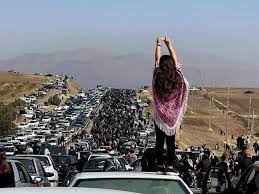
The movement also lives on in countless local demonstrations and protests by retirees, workers and others. This regime has intensified its repression in universities by banning students from education and dismissing academics in their thousands.
Violence against university students on university campuses has become commonplace. Women are refused many of their civil rights according to the Hijab and Chastity Bill that was brought in within a matter of weeks as an emergency measure to silence the movement. Women face heavy fines and are refused social services.
I’d like to ask you something about the impact of political Islam on violence towards women in countries where political Islam is dominant in governance of the country, especially were the participation of women in society is important. Where there is political Islamist rule there are reports of systematic violence against women and young girls. We have noticed that in your materials you very frequently campaign against this. Can you tell us a little bit more about it and its impact across the Islamic world?
We see this problem in most Islamic countries that do not recognise women’s equal rights, and the states resort to violence against women to impose reactionary and so-called “conservative” positions. This includes most countries in the Middle East region.
The condition of women and girls in Afghanistan is particularly concerning. The Taliban have imposed a life sentence on the female population by refusing them their rights to education and employment, among others. The military coup in Sudan was accompanied by massive violence against the Sudanese people, and the displacement of millions.
The issue of women’s rights is pertinent to all patriarchal societies. What political Islam has done is to enshrine medieval laws in 20th and 21st century laws. You see atrocities against women in India and the caste system. The United States and its repeal of the Roe v Wade laws are a sign of the fragility of the gains that women have made in patriarchal societies. Women’s rights are a major part of the struggle for a society free from exploitation.
What are the key reforms that your organisation is fighting for at present?
We fight for freedom, independence and equal rights for women. We seek freedom from all violence, the abolition of execution, abolition of all legal restrictions on the participation of women in the social, economic and political field; the abolition of the misnamed “family law,” similar laws that promote childbearing as the predominant role of women in society, and the hijab and chastity law.
We fight for the abolition of child marriage which has had devastating consequences for our children and society, and for the abolition of polygamy and unilateral divorce by men. We want the enshrining in law of equal rights in marriage and divorce, the abolition of mandatory hijab and gender segregation in offices, high schools and hospitals.
The prisons of Iran have been home to many fighters for progress. We fight for the freedom of political prisoners and an end to arrest of women’s rights activists and an end to the execution of political prisoners, which has intensified since the Woman, Life, Freedom movement started and continues to this day.
In what ways can women across the world help you in this struggle – how can we be most effective? We often say we have lots of information, but we are not sure what to do.
Iranian women need the support of progressive organisations and individuals for the people of Iran to determine their own future. US sanctions have already meant that the lives of the people have been adversely affected by dire economic conditions.
The US wishes to promote the forces that are aligned to it, as the representatives of Iranian people. Among these are the monarchists and the National Council of Resistance who call for US military intervention in Iran.
The record of the West’s military interventions in the region speaks for itself, from Afghanistan to Iraq and Libya. The fate of Iran must be determined by the people of Iran alone, and we need the solidarity of progressive forces for the people of Iran to end the autocracy and to establish a national democratic government.

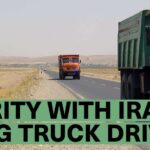

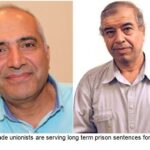
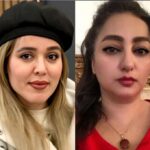

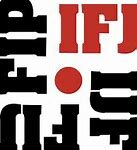

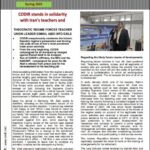

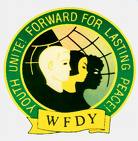

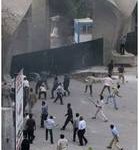
 Posted in
Posted in 